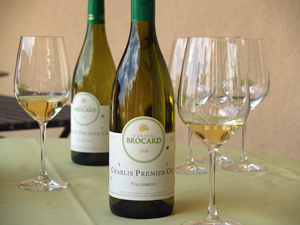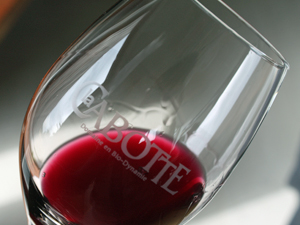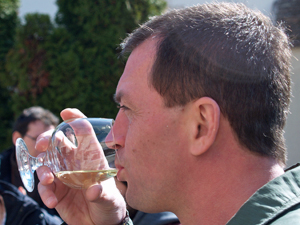There you are, comfortably seated amongst friends, at your in-laws dining table, in a restaurant with some colleagues, or opposite your loved one in a warm and cosy atmosphere. You've ordered a nice bottle of red wine from the wine list. Perhaps even an organic wine from Château Beau Rivage, Domaine la Cabotte, Château de la Bonnelière or the Allegria winery that you know well and are particularly fond of. The wine waiter arrives and asks THE embarrassing question. "Who would like to taste the wine"? Those in your company refer the waiter to you, and you're overcome with panic. How to taste the wine correctly and what to say?

Not to worry! Here are a few pointers to help you cover the basics, and to help you enjoy the wonderful moment when your senses are stimulated and enchanted by the "robe" of the wine, its fruity "nose", and its lingering length on the "palate". These are the three senses that called upon the most when tasting wines, and the trick is to find the words to describe what you perceive. Let's start with the sight, one of the first senses to be aroused when some wine is served in your glass.
Start by analysing its robe, which is a combination of its colour, intensity and viscosity. Is it ruby or brick red? Is the colour intense? Or even shiny? A wine's colour can tell you a lot about its evolution. A "young" red wine will tend to be more purple in colour, compared to an older wine which has started to turn an orangey-red. When inspecting the colour, it's best to do so against a white background such as a napkin or piece of paper. A coloured background can hide the true colour of the wine.

It's also useful to look for other visual references such as how clear the wine is from impurities, which can be a measure of quality, and its viscosity. How much a wine clings to the edge of the glass when you tilt it and watch the wine flow back gives an indication of the level of alcohol present. The more the wine forms legs or tears around the glass and flows slowly, the higher the alcoholic degree.
Let's move on to the smelly side of things. This analysis is done in two stages. The first is called the "first nose". There's no need to swill the wine around your glass yet, as a simple sniff above the glass will enable you to judge if a wine has a fault or not, and to give you a first idea of the primary aromas to be found in the wine.
The "second nose" calls first upon your skills to gently swill the wine around your glass in a circular motion to allow a little oxygen to mix with the wine and to release a more complex bouquet of fruity, floral, spicy or other aromas depending on the wine that you are tasting. Here the difficulty is not so much being able to smell the different aromas, but in correctly identifying them. You need to call on your memory, and it's often a frustrating experience because you know that you have already smelt the aroma somewhere, but you just can't put a name on it. Only training can help!

By now your mouth has started to salivate and your taste buds are fully alerted. The most important moment of your tasting has arrived, to taste the wine on your "palate". No need to take a big swig, a small amount is sufficient to open up a plethora of sensations. You will first notice the "attack" of the wine, which is what you experience immediately when you take the first sip. Then you will start to notice nuances and aromas, and to note whether you can detect any notes of salinity, sweetness, acidity or bitterness. You'll also get a feel for how tannic the wine is. And we also talk about the length of a wine, which is how long the tasting sensations stay in your mouth after swallowing or spitting out the wine. If you are tasting multiple wines, it is best to spit, and some tasters even think that by spitting out the wine, you can give a finer analysis to the tasting.
So a few of the basics to think about when tasting wine. You might at first think it's a little too much to take in for a simple dinner, but don't forget that the most important thing of all to guide you is whether you like the wine or not, and then it's just a matter or practice to better understand the whys and why nots!
Comments
No comments.




